“I spent a lot of time by myself watching loads of genre-based programming,” Halloween (2018) and Halloween Kills special make-up FX designer and department head Christopher Allen Nelson told us of his formative years when we recently sat down with him to discuss his prolific career, as well as his storied and interesting path to the Halloween film franchise. “Growing up in the late 1970s in Pittsburgh, Pennsylvania, movies and television were my parents and my church, for lack of a better description, and I was fascinated by Boris Karloff in Frankenstein, Lon Chaney in Phantom of the Opera, and the 1958 film Fiend Without a Face, among others, so I started dabbling in makeup at a very young age.”
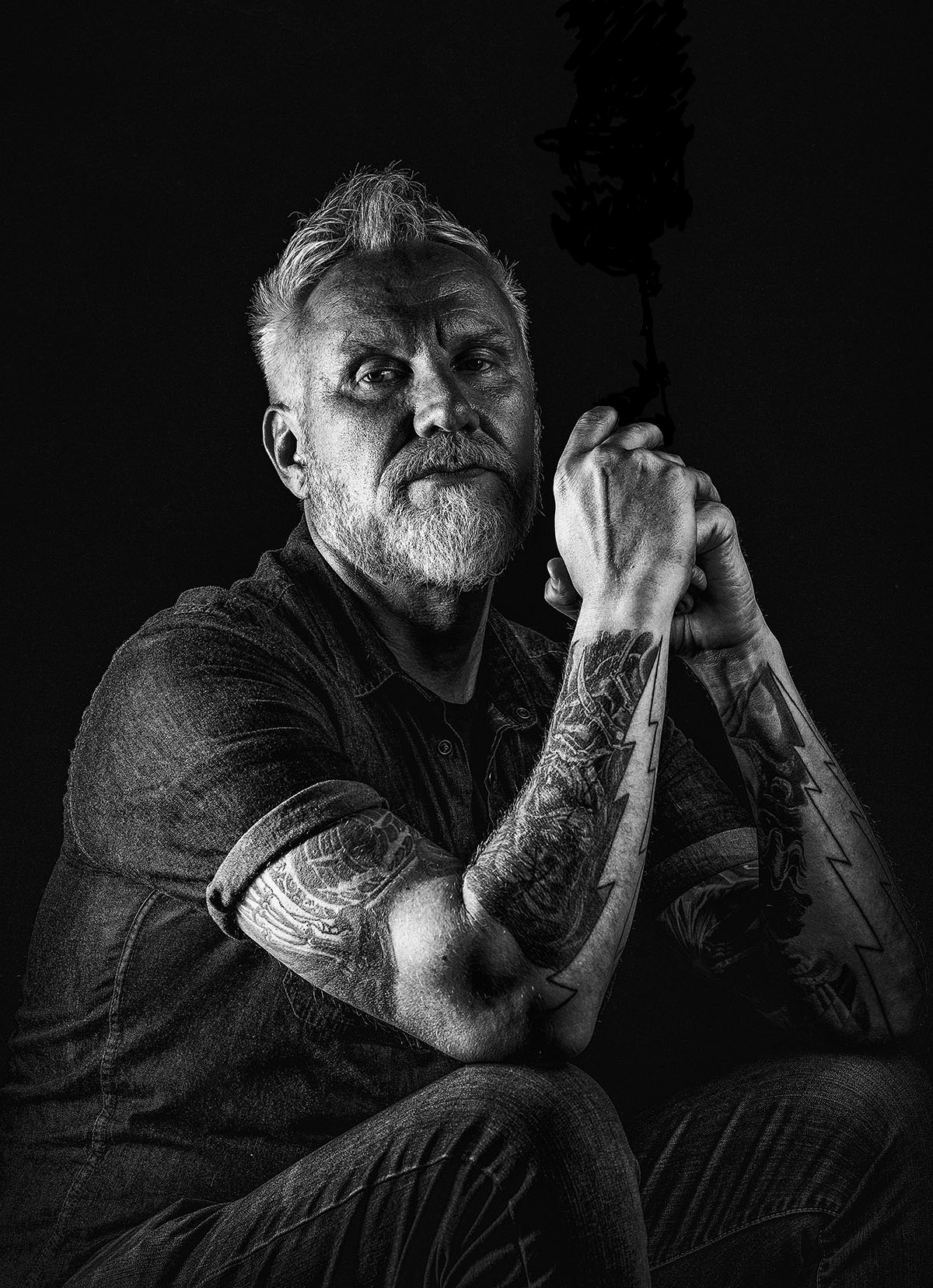
“Back then it really wasn’t popular to like that kind of stuff among most kids,” continued the Oscar and Emmy award-winning Nelson of his early obsessions. “It was very underground, and you were considered a misfit if you liked things like that, but I was just fascinated and loved it so. Being in Pittsburgh, the work of George Romero was also a huge influence on me. I can recall that Chiller Theater and (WIIC/WPXI, Channel 11 horror host) Bill ‘Chilly Billy’ Cardille would show Night of the Living Dead every summer, and it was a highlight of my childhood existence. That and Dick Smith’s Monster Make-up and Tom Savini’s book Grande Illusions, which showed me that you could do make up for a living. That’s really what got me into it, and it just kept going from there.”
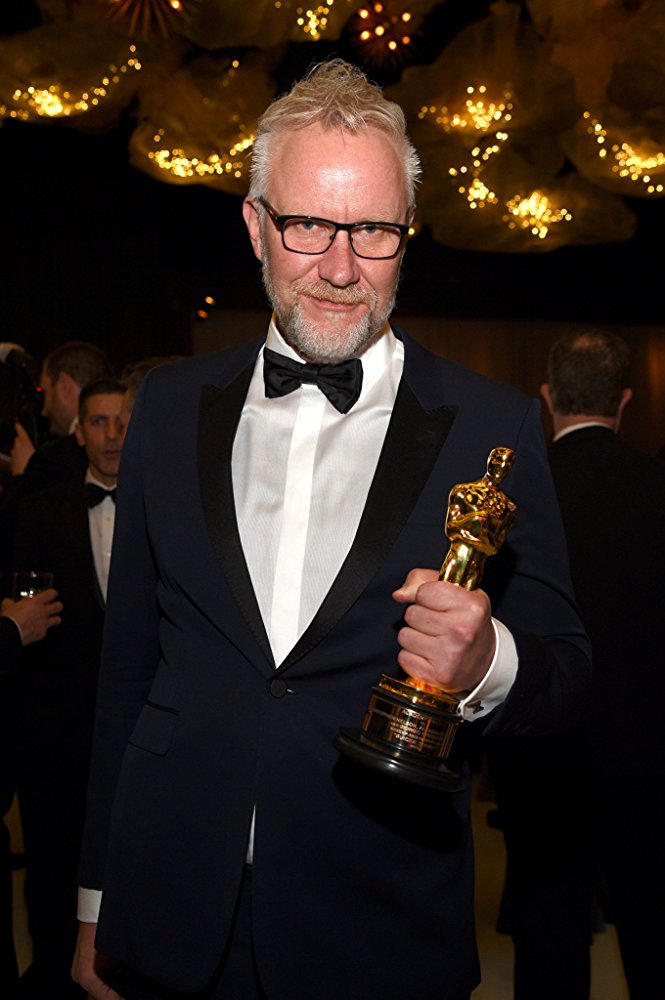
Of Halloween, and the series Nelson would many years be involved in (both as an FX artist and as an actor, having also portrayed “Officer Francis” in David Gordon Green’s 2018 direct sequel), he recalls of his introduction at an early age to Carpenter’s classic, “Halloween has always been a constant in my life. I saw it when it first came out in 1978. I was ten years old. I had walked to the movie theater to see it, and had a buddy whose older brother was a senior in high school and who also worked at the theater, so he let me in. I went in and I saw it by myself, and it scared the bejesus out of me, and it changed me forever. I remember that when the film was over, that I had to walk the two miles back home alone in the dark, and it was just horrifying. I saw Michael Myers behind every tree and every house and every bush.”
“It really for me was one of the scariest moments ever, and it made such an impression on me, that particular combination of Carpenter’s direction and Cundey’s cinematography and the mystery of it all: that character of Michael Myers,” Nelson reflected. “Growing up in a small town, I just related to it on so many levels. It didn’t come across to me as a slasher film. To me it was more of a psychological thriller, and that’s the way that I took it. So, it really made a huge, huge impression on me, to the point that afterwards I bought the Halloween novelization and did a book report on it, much to my schoolteacher’s chagrin.”
As for the pivotal point at which Nelson decided to take the plunge into professional FX work, “While I lived in Pittsburgh with my father, my mother lived in Los Angeles, so I would go there to visit every summer for a couple of months,” he said. “Visiting Universal Studios Hollywood and being surrounded by (recreations) of Dracula and the Mummy, and seeing Rick Baker win the very first Academy Award in 1982 on television for his makeup work on An American Werewolf in London made me realize that it was something that you can do. That you can work in the movies, and that you can actually have a career and make money, and that it was a real, tangible thing. So, at the very young age of fifteen, I knew that’s what I was going to do. There was no other option. I think it was all of those elements combined which solidified my fate.”
Vincent Price & Kim Hunter Present the Oscar to Rick Baker for An American Werewolf in London
As for Nelson’s early entrance into the colorful world of the Hollywood FX industry, it began with continued visits to special makeup effects supply shop Burman Industries, where he began to rub elbows with some of those responsible for the fantastical cinematic creations which had influenced him as a boy.
“While working odd jobs supporting myself, I spent most of my time practicing and learning from books and whatever tools and information I could get my hands on,” said Nelson of his early days in Los Angeles. “I realized I had found a community of movie, monster and make-up people just like me, and it was wonderful. I’d found my tribe so to speak. I did everything I could to meet and talk to artists working within the industry, and I networked and quickly made friends with people that I’m proud to say that I am still friends with to this day.”
Of those relationships, “Many of them started by going to Burman Industries in Van Nuys,” recalled the artist. “That was the place that had all the materials one would need to do what we do. There, I met so many people that introduced me to others. We hung out in each other’s garages and apartments, watched movies, sculpted, painted and had a blast.”
Working out of his own one-bedroom apartment sculpting, Nelson remembered, “I got Roma clay all over the carpet, and baked foam latex in the kitchen’s oven and stunk up the entire complex. Needless to say, I lost my renter’s deposit. But during that time, I had put together a decent portfolio, and I started hounding FX shops for interviews.”
“One of those shops was Tom Burman,” he offered. “Tom gave me my first shop gig, and I learned so much there working on commercials and test makeups, and for briefly on the ‘Superboy’ series.”
Following, Nelson worked at Optic Nerve (the shop founded by John Vulich and Everett Burrel, responsible for the makeup effects on display in the television series “Buffy the Vampire Slayer”) before interviewing at Rick Baker’s own Cinnovation Design Studio, where he worked for a short time.
“He gave me great advice,” recalled Nelson of the An American in Werewolf in London Oscar winner.
With his professional world expanding, Nelson recalled then meeting and making acquaintances with FX artist Bill Corso, who at the time was working at Steve Johnson’s XFX Inc.
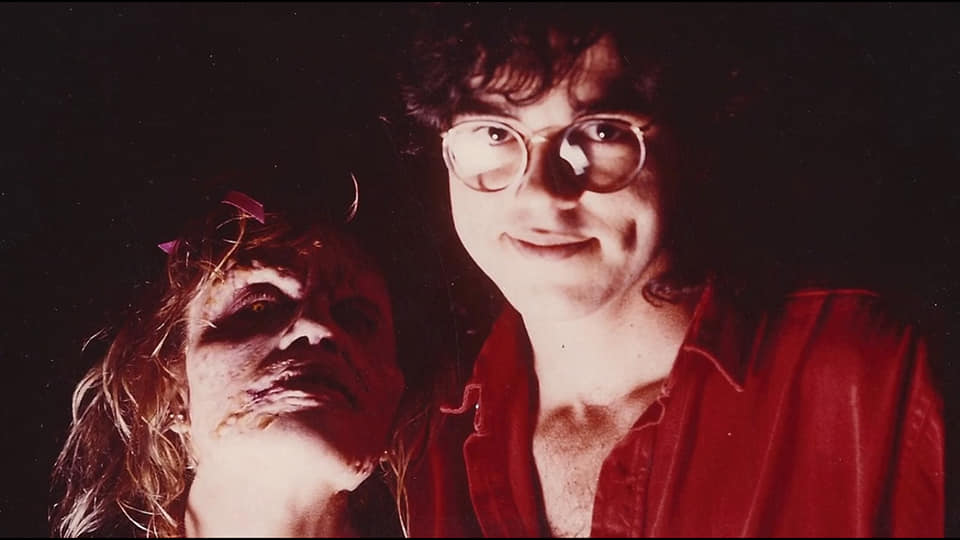
“Steve liked my portfolio, and he asked if I was willing to work for circus tickets in lieu of pay,” laughed Nelson. “Literally tickets to the circus. I said that I would. He then exploded laughing and said that he couldn’t believe that someone would work for circus tickets. Of course, he was joking, and he hired me. I ended up there for quite some time, bouncing back and forth a little between his shop and Rick Baker’s and learning as much as I could from so many great artists, like Bill Corso, Dave Dupuis, Joel Harlow, Norman Cabrera, Bill Bryan, and so many more.”
“I’m leaving so much out because it was a long time ago and quite a blur,” said Nelson. “Those were different times. Great times that will never return.”
With Nelson’s first credited feature coming in 1993 as a special makeup effects artist on Warlock: The Armageddon, and the early 90s proving itself to be a practical FX tour de force of splatter (just prior to the proliferation of computer generated imagery), we decided to take a trip down memory lane, and gave him some film feature titles on which he’d worked, querying, “What’s the first thing that first comes to mind?”
____
The Return of the Living Dead III (1993)
“I watched that just the other night!” laughed Nelson. “That film was a huge, momentous break for me. I was working at a company called Alchemy Effects, which was run by Mike Deak, and we were predominantly doing Charlie Band movies at the time. I think I was working on Dollman vs. Demonic Toys, and I’d met effects coordinator Tom Rainone, who sadly has since passed away. He was serving at the time as an effects coordinator for director Brian Yuzna on a project called Return of the Living Dead III, and he was often in our shop. Tom was kind of looking for young talent who could work cheap and under pressure and who were hungry, and he took a liking to me. So, I went and met with Brian and put in a bid for the job and ended up getting a portion of that movie and building it myself, which was just huge to me. I mean, I was a big fan of the original Return of the Living Dead film, so to be able to work on Part III was simply amazing!”
“So, that’s how that came about, and they took a chance on me, and it was great fun,” Nelson further expounded. “Fully practical movies were coming to the end of an era at the time, and that movie had so many effects that the production employed four different makeup shops, and all of the artists had their own unique take on the material. So, there was both at once a sense of community and of healthy competition, with everyone coming to set to show off the cool shit we’d made. And filming with Yuzna, who was a legend, was so great. Like many independent films, we were still challenged by a tiny budget and a short shooting schedule, but it was a wonderful project to be involved in.”
As for what portion Return of the Living Dead III’s cinematic mayhem Nelson was responsible for, he offered, “I did the first zombie in the film! You know the very tall and thin zombie (actor Clarence Epperson) which they wheel into the lab? That was mine, and the entire opening sequence. (Hellraiser III) director Anthony Hickcox actually cameos in that scene, and I’d also designed the gags where his fingers are bitten off and his brains are bashed out. So those were my main contributions to the film, with a few more little things sprinkled throughout.”
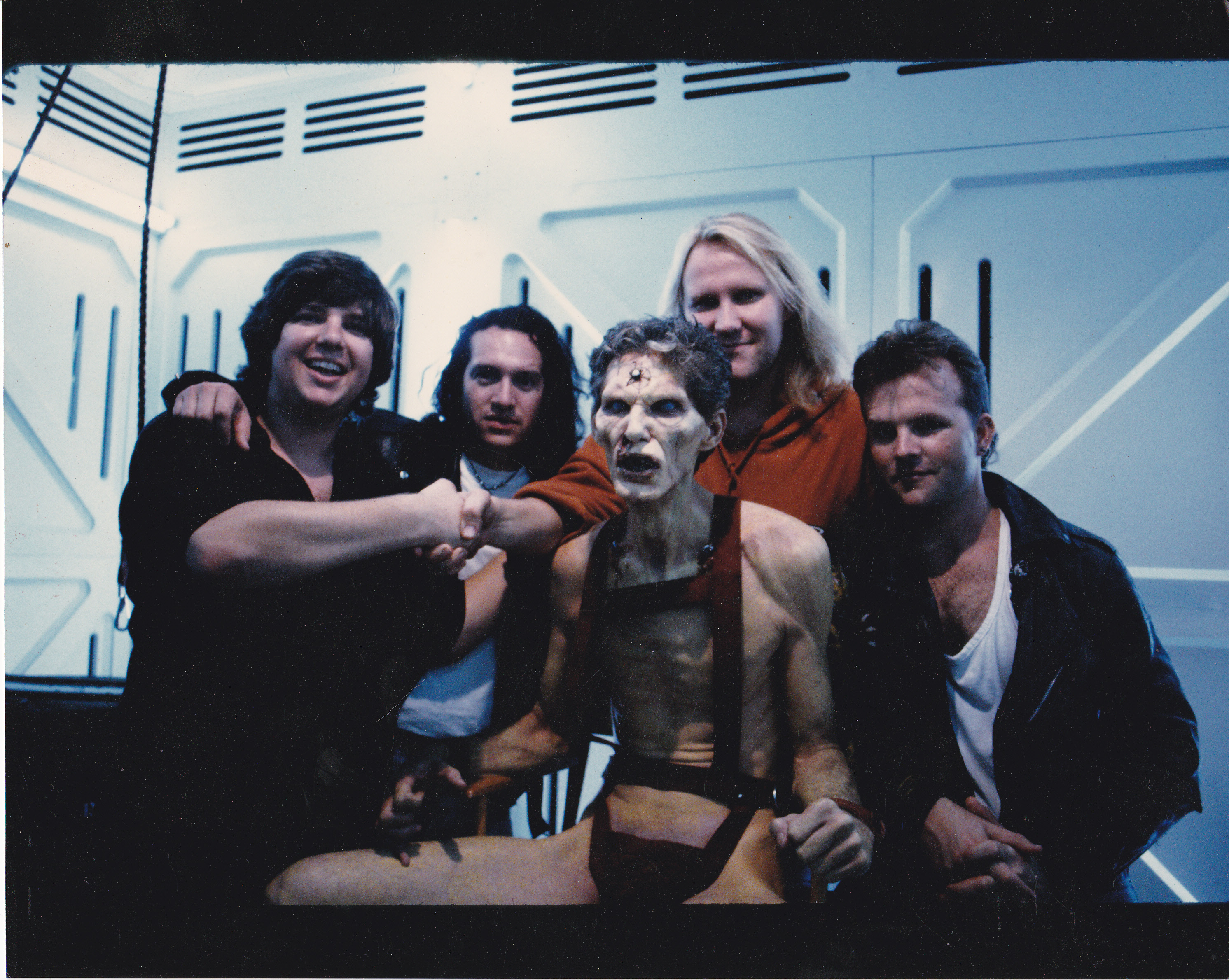
____
Night of the Demons 2 (1994)
“I was working for Steve Johnson at the time,” recalled Nelson of his contributions to the Brian Trenchard-Smith film, which serves as a direct sequel to Kevin Tenney’s 1988 classic originator Night of the Demons. “I’d worked for Steve on and off and then had a steady gig with him for about six or seven years, and that was one of the movies that we did, and I was able to help build some really cool effects in there with a bunch of great guys: Johnson, Bill Corso, Dave Dupuis, Eric Fiedler, Bill Brian, Joel Harlow. We also did The Stand and The Shinning TV films with Mick Garris around that time. There were a lot of legendary artists there, all working under the tutelage of Johnson, and we were encouraged to be free and open and to think outside the box as far as the effects, and Steve’s was a great place for that. We did some cool gags in that film, I think. Angela’s evolution into the snake demon and the decapitated head dribbling scene come to mind!”
____
Bordello of Blood (1996)
“Oh god!” Nelson exclaimed at the mention of the generally poorly regarded Gilbert Adler-directed, Corey Feldman-starring vampire film, which served as a follow-up to the 1995 cult hit Tales from the Crypt: Demon Knight. “Bordello of Blood is one I don’t talk about much. That was a hellish, nightmarish shoot. We shot that in Vancouver. Again, no money and it was just plagued with problems. It was just hard to do, and we were working out of Canada. The talent pool in Vancouver was very small at the time, and we couldn’t get certain supplies, and we couldn’t get enough people to do what we needed to do, so it was really a tough shoot pulling all of that together. I look back on it now and I can laugh, but at the time it was quite stressful and taxing, and not some of my best work. For myriad reasons. But I guess it’s got its own cult following now, this many years later.”
____
With the 90s nearing a close and a string of films now under his belt (including the werewolf flick Bad Moon, Berry Levinson’s Sphere and the horror/sci film Species II, among others), Nelson’s first professional confluence with the world of Halloween, although indirectly, would come in 1999 on the set of the feature film Virus, starring none other than the grande dame of scream queens herself, Jamie Lee Curtis.
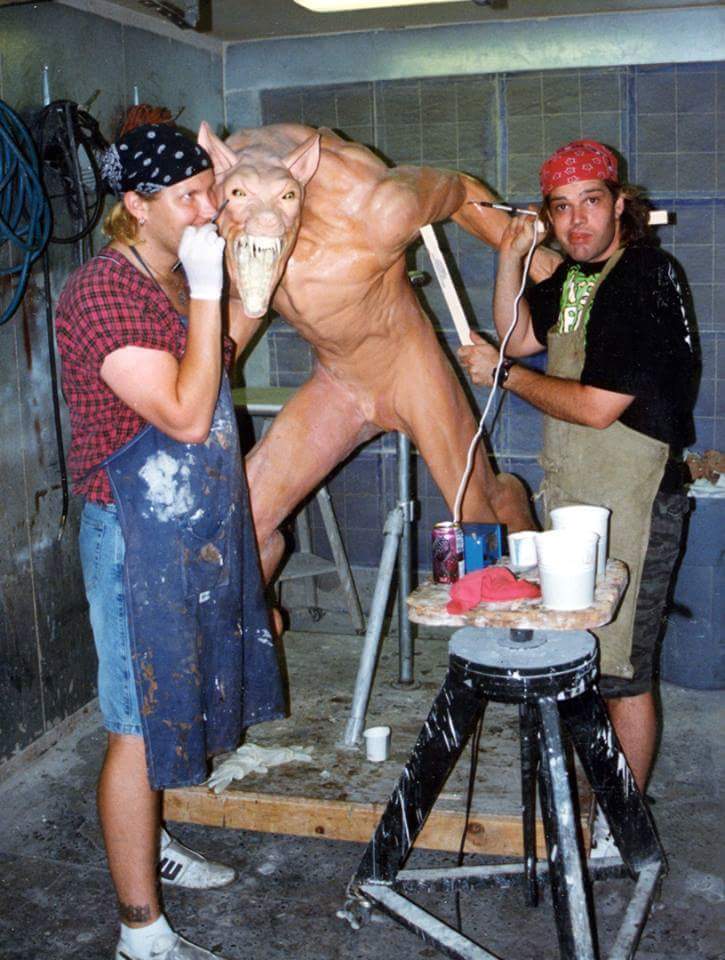
“I was again working with Steve Johnson, who masterminded all of the amazing creations in that film,” recalled Nelson of the John Bruno horror-sci fi thriller, which revolves around the discovery of an abandoned Russian research vessel, and the alien life form within. “We really pushed the envelope at the time of technology with those giant, bio-mech robots in that film.”
“I remember it being really a peak of a creative time, especially with Steve Johnson,” reflected Nelson of the decade. “Unfortunately a lot of those movies that we did at Steve’s, they were so subversive and strange, and the effects were so monumental and weird that I think they didn’t go over well, and only over time did they find an audience that appreciates that stuff.”
“But Virus was absolutely the film where I first met Jamie, during some reshoots on the Paramount lot,” he recalled. “It was in the big water tank, I believe, and she was fun and lovely and of course so nice. I didn’t have a whole lot of involvement with her at the time, but that changed later with Halloween and Halloween Kills, and every time she sees me now, she goes, ‘Virus!’ And I say, ‘I know!’”
Coming soon, part two of our three-part series, in which Nelson discusses his attachment to Halloween (2018) and the development process behind Myers’ mask and approach to the film’s practical effects, as well as his experience in playing “Officer Francis.” And in part three: Halloween Kills.
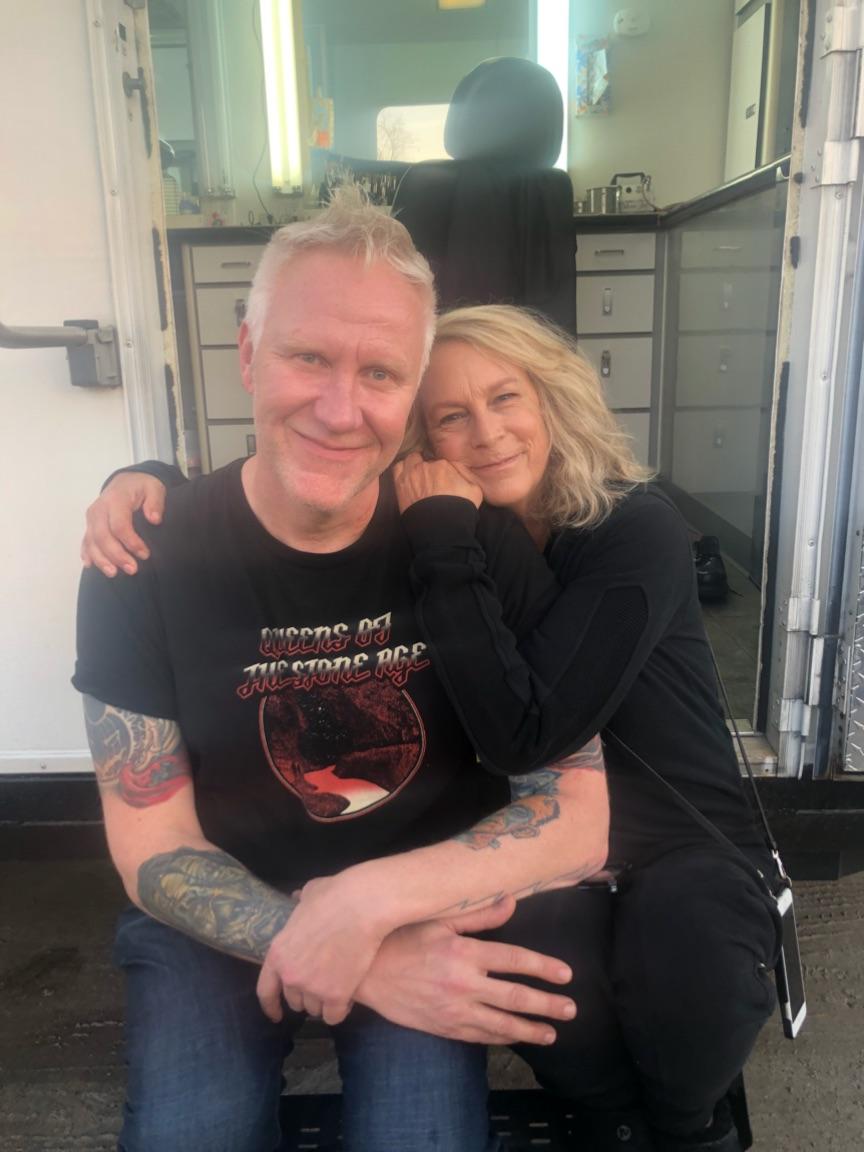
_
Writer’s note: this interview has been lightly edited and condensed for clarity.